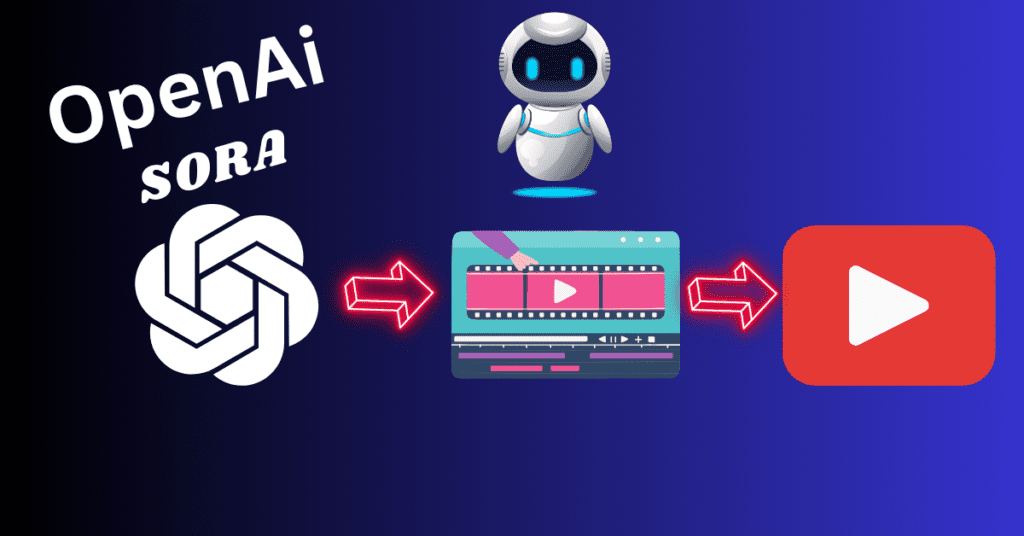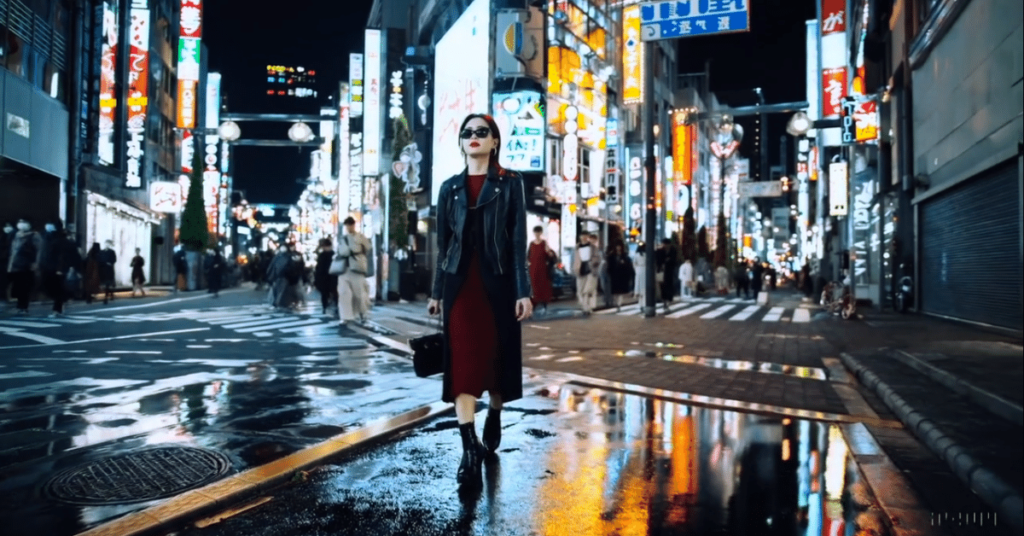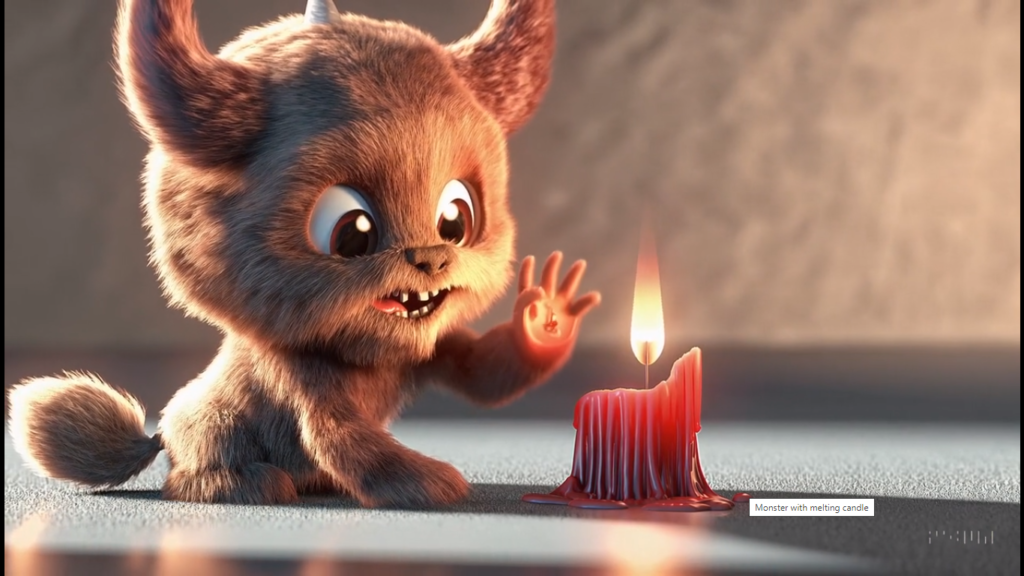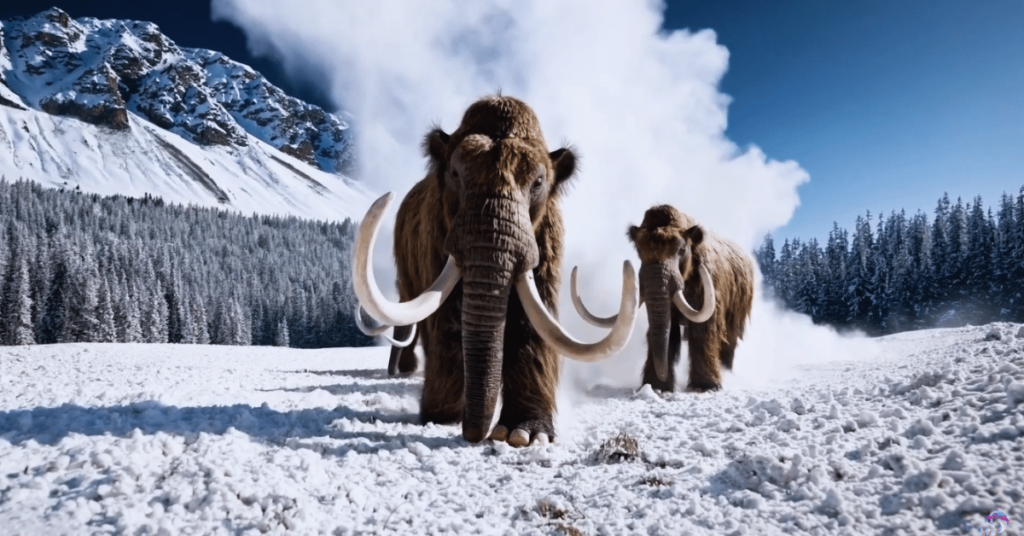OpenAI Sora text-to-video tool represents an AI breakthrough converting text into high-quality synthetic video. If you are a video creator or editor then definitely OpenAI Sora can help you a lot in your work, because you can generate realistic and imaginative scenes in a couple of time, this is a revolutionary technology that can be used in different industries of film making, video creating etc.
Sora is an AI model that can create realistic and imaginative scenes from text instructions.
Dive into how OpenAI’s Sora text-to-video tool leverages the latest AI to transform written descriptions into photorealistic video creations. Understand Sora’s video generation process, customization features, pricing, competitors, and more in this in-depth guide.

Explore if AI text-to-video like OpenAI’s Sora could be a gamechanger for video creators, marketers, educators and beyond. See examples and visuals of Sora’s outputs based purely on text prompts. Learn about the future possibilities as this generative video technology matures.
Unlocking the Power of OpenAi Sora Text-To-Video Tool
Artificial intelligence (AI) continuously showing its revolutionary tools in the field of Technology which are sometime really surprising. One fascinating new innovation from leading AI research company OpenAI is Sora, an AI system that converts text into high-quality synthetic videos with remarkable speed and accuracy.
As companies race to create the next text-to-video generator, OpenAI’s offering shows exceptional promise and capabilities. In this post, we’ll explore how Sora works, its current features, use cases, limitations, pricing, and what the future may hold for AI-generated video content.
Sora gives us a glimpse of the future in which descriptive text can be effortlessly transformed into realistic motion graphics and video. This has enormous potential across numerous industries and applications. While still in beta testing with select customers, Sora displays AI’s ability to automate video production in a fast, scalable way previously impossible through manual content creation.
What is OpenAI Sora?
OpenAI Sora is an artificial intelligence system developed by OpenAI that converts text into high-fidelity synthetic video. Sora is the first Ai Video Model that can generate realistic video scenes from text prompts and it is also capable of understanding and translating natural languages.
How OpenAI Sora Text-to-Video Generation Works
Generating videos from OpenAi Sora Text-toVideo Tool is based on generative adversarial networks (GANs), which uses the process of deep learning to understand the given text prompts to create realistic video clips.
Overview
- Users input text containing descriptions of a video’s desired visuals, actions, camera angles and movements
- The AI analyses the text to extract semantic information
- GAN machine learning models generate synthetic video frames
- Additional neural networks review and refine the raw video output
- The final output video seamlessly matches the text prompt
Key Sora Capabilities and Features:
- Photo-realistic video quality (640×480 resolution currently)
- 1 to 30-second videos from text
- Customize length, quality, frame rate
- Control camera angles, character actions
- Generated voices and sound effects
Sora represents a massive leap forward for AI-generated video. While improvements can still be made, it shows the accelerating pace of progress in natural language processing translating into realistic imagery.
Examples of Videos Created by OpenAI Sora
Sora is capable of producing convincing video based solely on text prompts. While it occasionally generates strange visual artifacts or distortions, the overall quality is impressive.
How to Use OpenAI Sora Text-to-Video
Using OpenAi Sora Text-to-Video Tool for generating videos for you is based on text prompts, which save a lot of time .
Here is an overview of the step-by-step process:
- Sign Up for Access – Sora is currently in closed beta, requiring access approval from OpenAI. You must submit an application explaining how you intend to use the tool.
- Provide Text Prompts – The quality of your videos depends heavily on writing detailed text descriptions of the desired visuals, actions, camera shots, etc.
- Select Video Options – Customize length from 1 to 30 seconds, video resolution and frame rate, and whether to include computer-generated voices.
- Generate Video – Once submitted, Sora’s AI models work behind the scenes to create the synthetic video. Length impacts processing time.
- Download Video – View and download your AI-generated videos to use across applications and share online.
Tips for Creating Better Sora Videos
Follow these tips to improve the quality of videos produced by Sora:
- Use descriptive sentences and bullet points rather than blocks of text
- Experiment with highly-detailed prompt formatting
- Adjust video length, resolution, frame rate, and audio based on needs
- Try multiple prompts if output quality is lacking or unintended objects appear
- Report glitches through OpenAI’s feedback channels
Overall, well-formatted prompts yield the best results from Sora. The system also provides levers to iteratively enhance video quality over time as the AI model trains on more examples.



The above all videos are generating with Sora, You can check all these on their
OpenAI Sora Pricing and Availability Details
Since Sora remains in closed beta, official pricing details have not been publicly shared. The business model will likely involve:
- Credits System – Users purchase packs of credits to “spend” on generating videos. More credits needed for longer/higher quality videos.
- Tiered Plans – OpenAI offers free and paid access tiers, with higher tiers providing advantages like more credits, faster processing, higher resolution potential, etc.
Current availability remains extremely limited, with the waiting list already long. OpenAI will gradually open access more widely over 2024 and beyond based on demand and computing resource availability.
Table comparing OpenAI’s different AI product offerings:
| Product | Capabilities | Availability |
|---|---|---|
| DALL-E | Text-to-image | Public beta |
| Claude | Conversational AI | Limited beta |
| Sora | Text-to-video | Very limited beta |
Over time, we expect OpenAI to make Sora more widely accessible to customers across sectors like media, advertising, education, gaming, and more.
OpenAi Sora Text-To-Video Tool: Qualities and Features
| Feature | Description |
|---|---|
| Type of AI | Diffusion Model |
| Function | Generates short videos (up to 1 minute) from text descriptions |
| Current Stage | Research phase, not publicly available |
| Strengths | – Generates realistic and imaginative scenes – Captures diverse styles, characters, and environments – Potential for various applications |
| Limitations | – Limited video length (1 minute) – Still under development, potential for improvement – Not publicly available yet |
| Technical Features | – Uses foresight to maintain subject consistency even when out of view – Gradually transforms static noise into video frames – Trained on a massive dataset of text and images |
| Potential Applications | – Video game design and animation – Education and marketing – Content creation and storytelling – Research and visualization |
| Ethical Considerations | – Potential for misuse and generating harmful content – Bias and fairness in results – Need for responsible development and usage guidelines |
Comparing OpenAI Sora to Other Text-to-Video AIs
Sora stands above competitors in quality and capabilities based on demos and customer commentary during early testing. Let’s compare Sora against alternatives on the market:
Text-to-Video Competitors
- Google Imagen – Lower resolution output. Less accurate text conversion. Still images with audio currently.
- TikTok Text-to-Video – Limited features and customization so far. Video game focused.
- Synthesia – Requires recording real human voices. More avatar focused.
| Text-to-Video System | Resolution | Accuracy | Customization | Use Cases |
|---|---|---|---|---|
| OpenAI Sora | 640×480 | High | Advanced controls | Broad applications |
| Google Imagen | 256×256 | Moderate | Basic | Digital media |
| TikTok Text-to-Video | 720p | Low | Minimal | Gaming petitions |
| Synthesia | 1920×1080 | High | Avatar and voice | Explainer videos |
Sora sets itself apart by enabling rendering of realistic environments and human characters that closely match descriptions provided through text prompts. We expect Sora’s capabilities to rapidly expand as OpenAI incorporates customer feedback into their models.
OpenAI Sora Use Cases and Applications
There are endless applications for AI-generated text-to-video across sectors:
Media and Entertainment
- Automatically generate storyboard animations
- Speed up video game development
- Film visual effect prototyping
Marketing and Advertising
- Design video ads rapidly
- Produce product demos and explainers
- Optimize video landing pages
Training and Education
- Create instructional videos
- Develop virtual reality simulations
- Illustrate hard-to-film scenarios
Text-to-video generation eliminates immense manual effort traditionally required for animation and CGI. Almost anyone can bring their visual ideas to life without technical expertise. OpenAI wants this tool democratizing video creation for more people and use cases.
Also Read Latest News from Artificial Intelligence
The Future of AI Text-to-Video
Text-to-video represents the next frontier for synthetic media as the underlying AI technology matures.
We expect continued improvements to Sora over 2024 and beyond:
✔️ Higher video resolution and frame rates
✔️ Longer output video duration
✔️ Enhanced photorealism for environments, objects, and characters
✔️ More fine-grained voice and sound effect controls
There remains justified caution about how these powerful generative video capabilities could be misused for fraud, fakes, and other malicious purposes. OpenAI emphasizes the importance of developing robust detection methods in parallel, already proving successful in detecting deepfakes.
Regardless of the challenges, AI text-to-video marks a new paradigm in dynamically translating ideas and stories into cinematic creations. Sora provides a glimpse into this approaching future where written words can be effortlessly transformed into lifelike videos on demand. We are excited to see how the technology progresses in the years ahead.
Conclusion
OpenAI Sora represents a breakthrough in synthesizing realistic video purely from text input. This AI-powered text-to-video generator creates high-quality video footage matching natural language descriptions provided by the user.
We explored Sora’s capabilities in converting written words into video segments with impressive photorealism. The underlying generative machine learning technology analyzes prompts to extract semantics that drive the rendering of coherent video visuals and audio.
While still in limited beta testing, Sora displays the accelerating progress of AI in mimicking human creativity. The potential applications across media, gaming, marketing, training and more are vast once refinement continues and OpenAI opens access more widely.
Of course, there remains justified caution around the misuse of such powerful generative video capabilities for duplicitous purposes. However, AI safety and detection mechanisms continue advancing in parallel to counter threats from deepfakes and other synthetic disinformation.

1 thought on “OpenAi Sora Text-To-Video Tool | Easily Create Videos from Text Prompts”